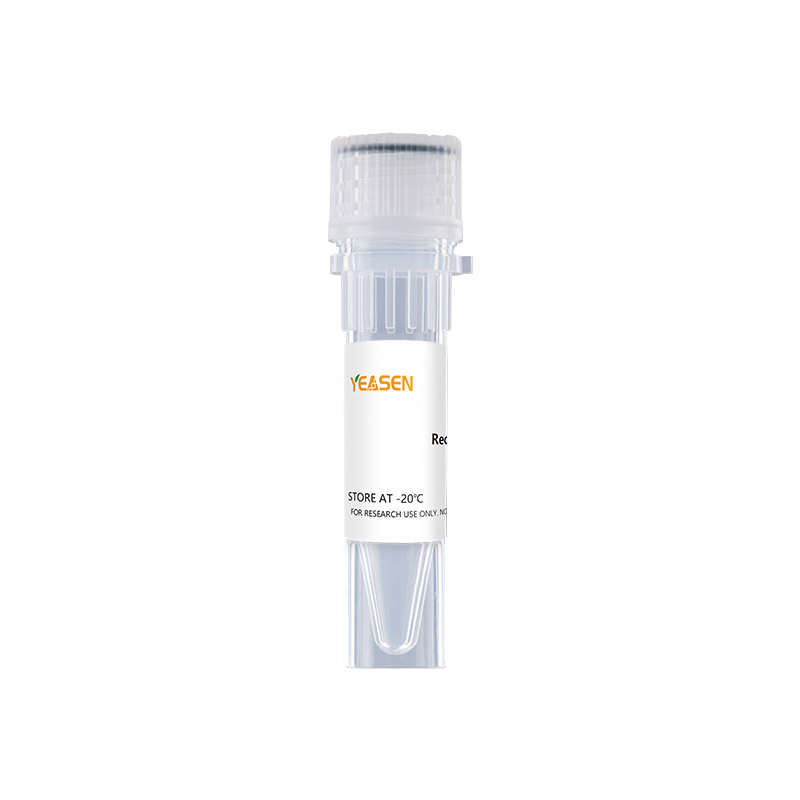

產(chǎn)品說(shuō)明書
FAQ
COA
已發(fā)表文獻(xiàn)
Cardiotrophin-like cytokine (CLC), also referred to as novel neurotrophin-1 (NNT-1) or B cell-stimulating factor-3 (BSF-3), is a new member of the IL-6 family of structurally related cytokines that includes IL-6, CNTF, LIF, CT-1, IL-11 and OSM. All family members share the receptor subunit gp130 that belong to the type I cytokine receptor superfamily. Ligand binding leads to gp130 homodimerization or heterodimerization (with LIF receptor or OSM receptor beta ), and induces cell signaling and functional activity. For several family members, including CNTF, IL-6, and IL-11, binding of the ligand to a specific receptor alpha subunit (CNTF R alpha, IL-6 R alpha, or IL-11 R alpha ) is required prior to gp130 homo- or hetero-dimerization. CLC cDNA encodes a 225 amino acid (aa) residue precursor protein with a putative 27 aa residue signal peptide that is cleaved to yield the mature protein. Among the IL-6 family, CLC is the most homologous to cardiotrophin, having 29% aa sequence homology. CLC has been shown to bind with the soluble orphan receptor cytokine-like factor-1 (CLF) to form a heterodimeric composite cytokine that subsequently interacts with the membraneassociated CNTF R alpha to initiate gp130-LIF R dimerization and cell signaling. Alternatively, when co-expressed within the cell, CLC can complex with soluble CNTF R alpha to form an alternate composite cytokine that is secreted. This composite cytokine is also capable of initiating gp130-LIF R dimerization. The E. coli-expressed CLC can initiate cell signaling via the tripartite membraneassociated CNTF R alpha and gp130-LIF R. E. coli-expressed CLC does not bind efficiently with soluble CNTF R alpha in solution to initiate cell signaling on cells expressing gp130 and LIF R.
Product Properties
|
Synonyms |
Cardiotrophin-like cytokine factor 1, BSF-3 |
|
Accession |
Q9UBD9 |
|
GeneID |
23529 |
|
Source |
E.coli-derived Human NNT-1/BCSF-3, Leu28-Phe225. |
|
Molecular Weight |
Approximately 22.3 kDa. |
|
AA Sequence |
LNRTGDPGPG PSIQKTYDLT RYLEHQLRSL AGTYLNYLGP PFNEPDFNPP RLGAETLPRA TVDLEVWRSL NDKLRLTQNY EAYSHLLCYL RGLNRQAATA ELRRSLAHFC TSLQGLLGSI AGVMAALGYP LPQPLPGTEP TWTPGPAHSD FLQKMDDFWL LKELQTWLWR SAKDFNRLKK KMQPPAAAVT LHLGAHGF |
|
Tag |
None |
|
Physical Appearance |
Sterile Filtered White lyophilized (freeze-dried) powder. |
|
Purity |
> 98 % by SDS-PAGE and HPLC analyses. |
|
Biological Activity |
The ED50 as determined by a cell proliferation assay using human TF-1 cells is less than 4 ng/mL, corresponding to a specific activity of > 2.5 × 105 IU/mg in the presence of human CNTF R alpha. Fully biologically active when compared to standard. |
|
Endotoxin |
< 0.1 EU per 1μg of the protein by the LAL method. |
|
Formulation |
Lyophilized from a 0.2 μm filtered concentrated solution in 30% Acetonitrile and 0.1% TFA. |
|
Reconstitution |
We recommend that this vial be briefly centrifuged prior to opening to bring the contents to the bottom. Reconstitute in sterile distilled water or aqueous buffer containing 0.1% BSA to a concentration of 0.1-1.0 mg/mL. Stock solutions should be apportioned into working aliquots and stored at ≤ -20℃. Further dilutions should be made in appropriate buffered solutions. |
Shipping and Storage
The products are shipped with ice pack and can be stored at -20℃ to -80℃ for 1 year.
Recommend to aliquot the protein into smaller quantities when first used and avoid repeated freeze-thaw cycles.
Cautions
1. Avoid repeated freeze-thaw cycles.
2. For your safety and health, please wear lab coats and disposable gloves for operation.
3. For research use only!
HB220309

